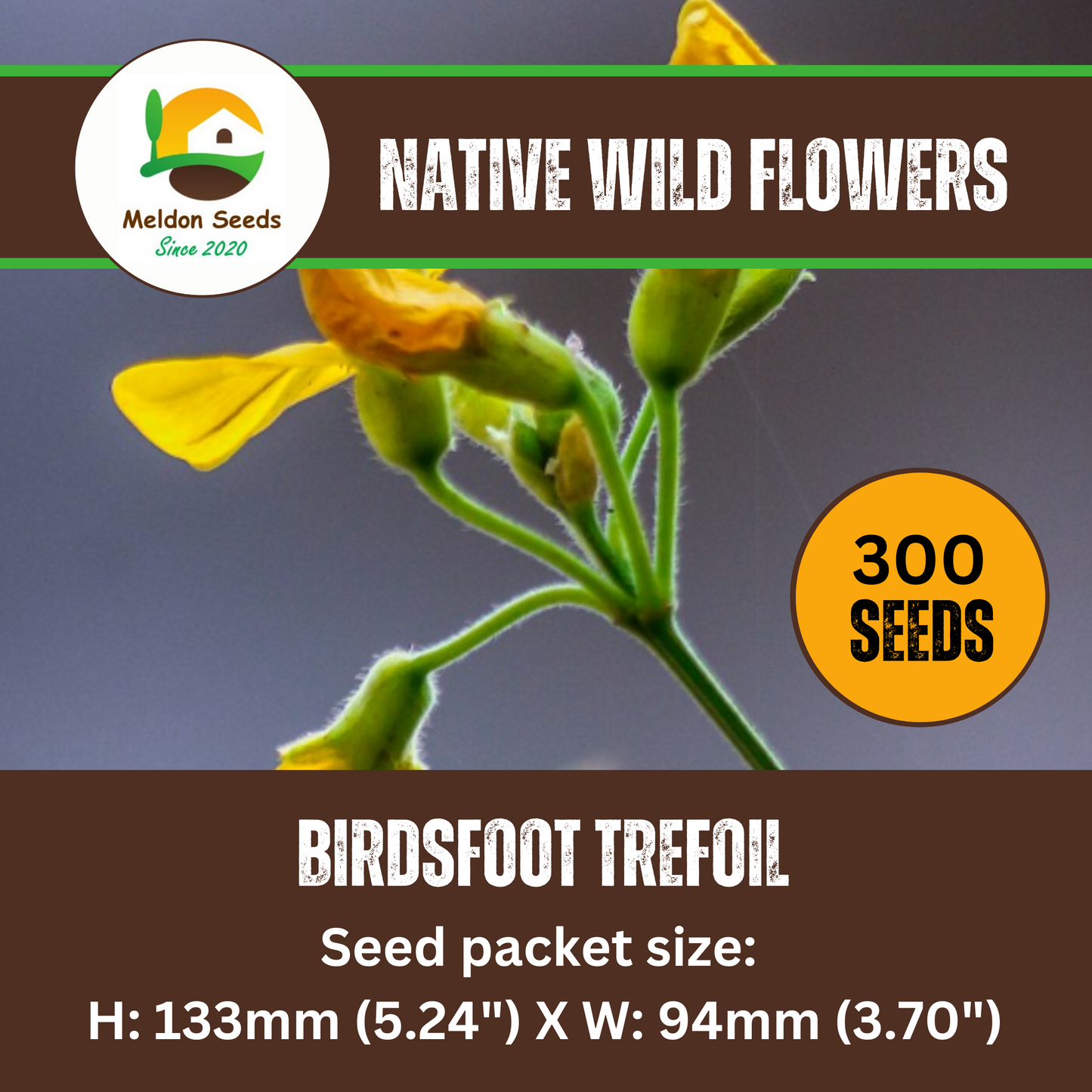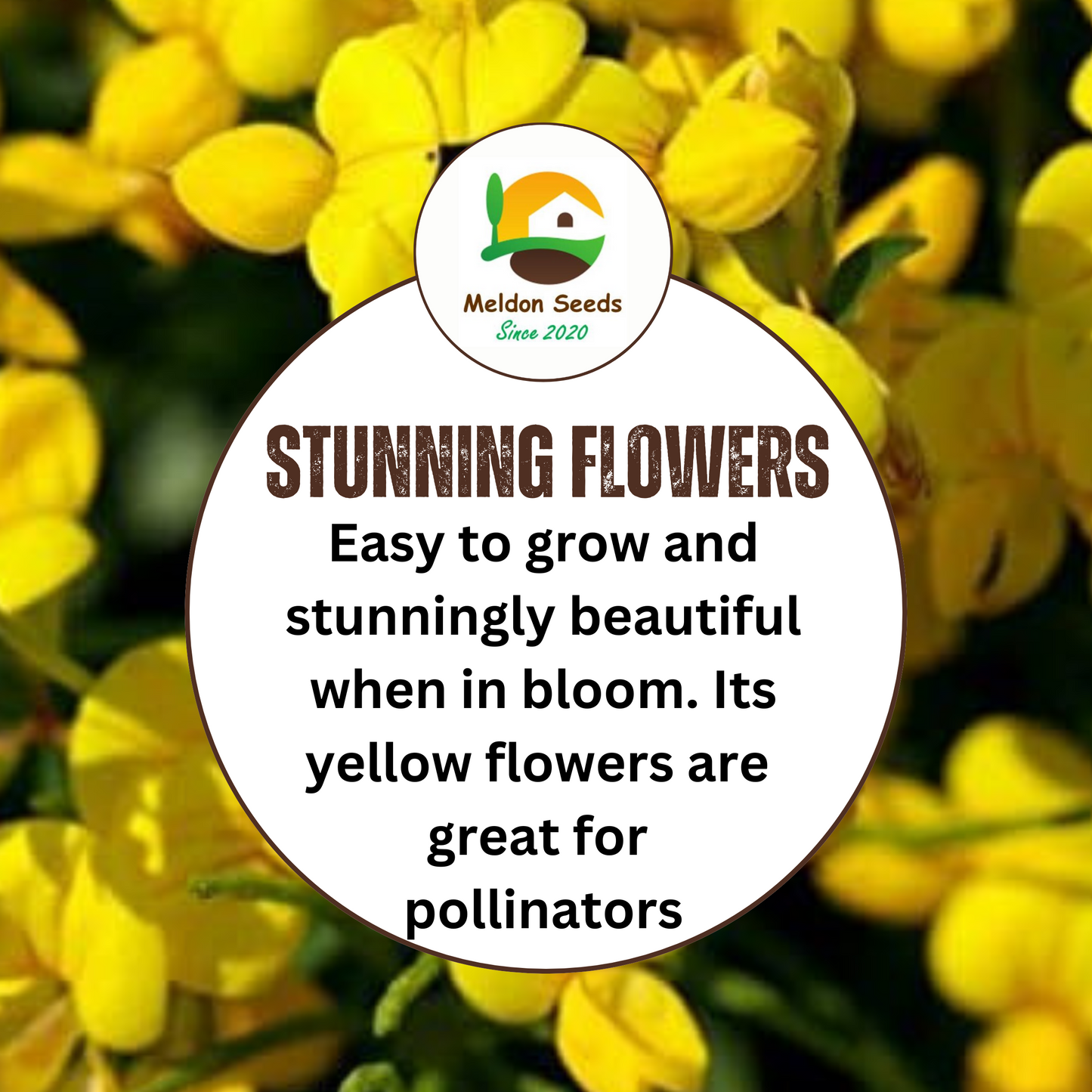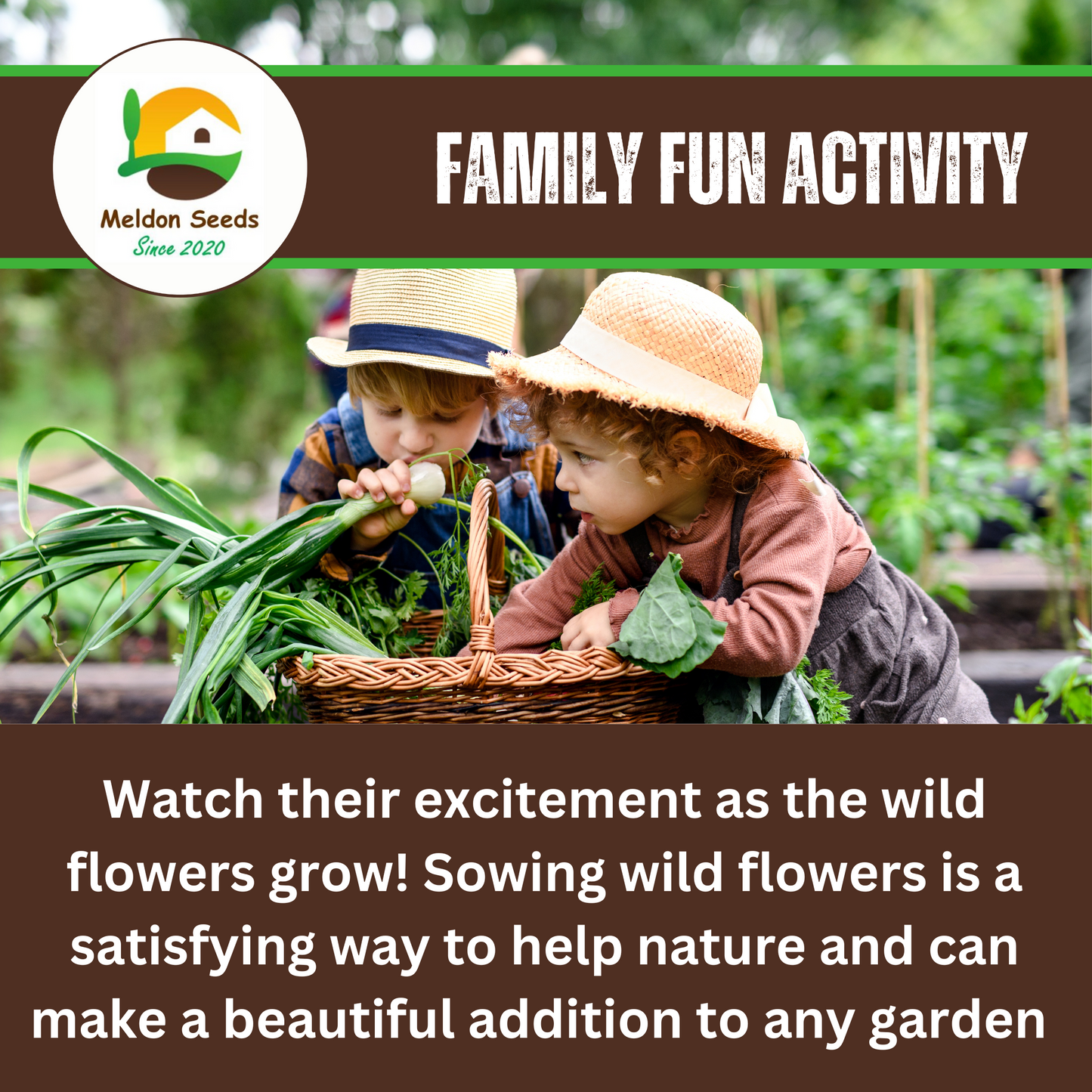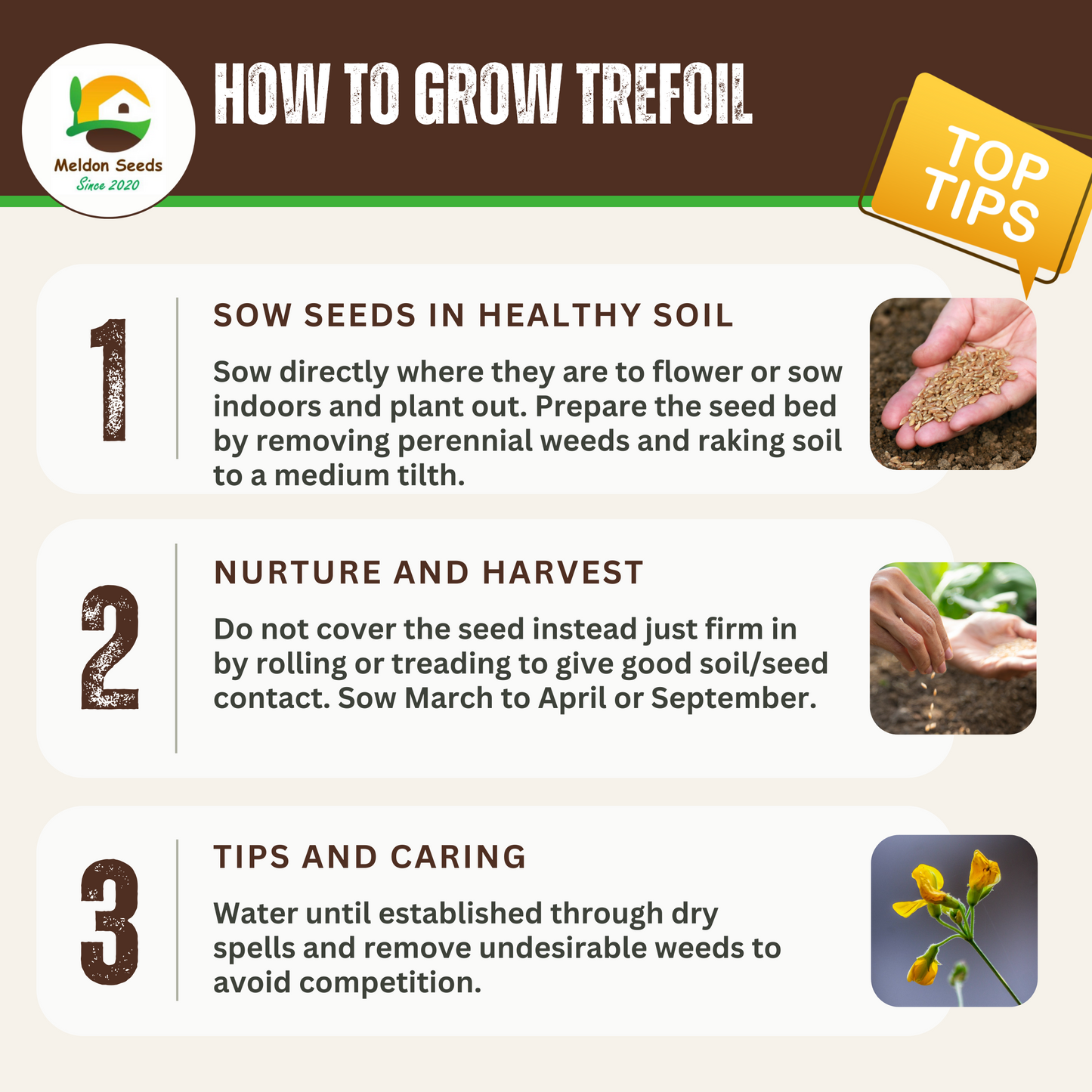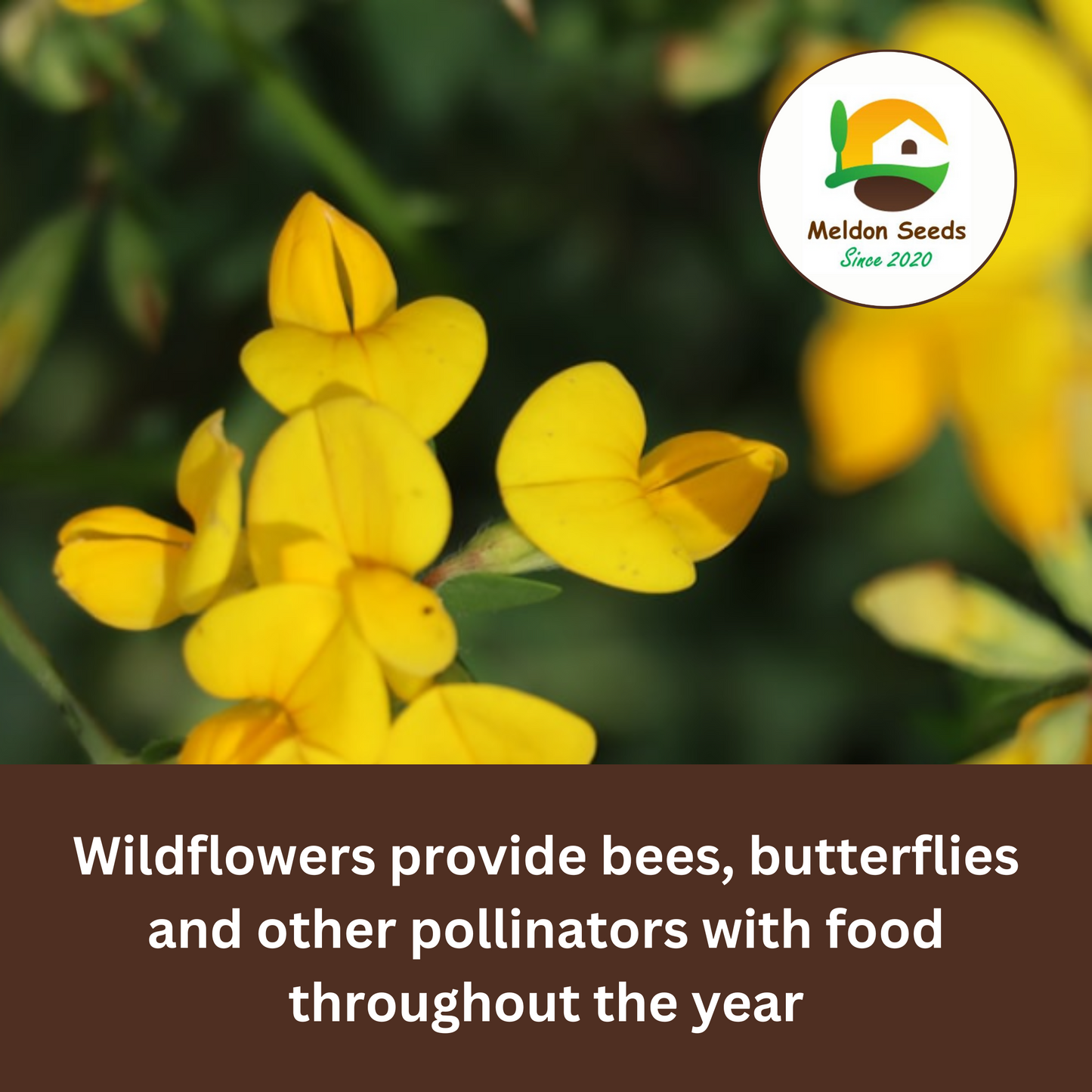Meldon Seeds
Birdsfoot Trefoil Seeds - 300 Native UK Wild Flower Seeds for Attracting Birds, Bees, Wildlife, Pollinators, Suitable for Planting and Growing Outdoors in Meadows, Fields and Gardens by Meldon Seeds
Birdsfoot Trefoil Seeds - 300 Native UK Wild Flower Seeds for Attracting Birds, Bees, Wildlife, Pollinators, Suitable for Planting and Growing Outdoors in Meadows, Fields and Gardens by Meldon Seeds
Couldn't load pickup availability
Birdsfoot Trefoil is a stunning yellow wild flower: Common bird's-foot-trefoil is a member of the pea family. Its yellow flowers look like little slippers and appear in small clusters. They are followed by seed pods that look distinctly like bird's feet or claws, hence the common name. A low-growing plant, its leaves have five leaflets and are downy.
Sow March to April or September.
Flowers June to September.
Packet size 300 seeds approximately
ATTRACT BIRDS AND BEES TO YOUR GARDEN: Sowing Native Wild Flowers is a great way to attract beneficial insects and pollinators to your garden, allotment or field while also provide a food source for birds and other wildlife. Their bright yellow flowers take on an orange hue as they age, and will provide a good source of nectar for bees and butterflies.
HOW TO PLANT: In early spring or autumn start them off under glass, sowing the seeds shallowly in good seed compost and keeping them moist (but not wet) until they germinate. Thin out when they are large enough to handle and pot on. Gradually harden off before planting out in late spring or early summer. Alternatively, sow them directly into a well-prepared bed when temperatures are warmer. Seeds sown in autumn have a good chance of producing flowers in their first summer.
TOP GROWING TIPS: Can be sown at any time of year, but best in early autumn or in spring. Soak the seeds in water for 24 hours or gently scarify before sowing. Seeds may need some protection from wild birds until they germinate. Keep them well watered initially and remove any weeds if they appear.
GO BACK TO YOUR ROOTS: Planting wild flowers is a wonderful way to spend time in your garden, cultivate mindfulness and appreciate the little things just like in years gone by. Working with the earth and growing things is immensely satisfying – teach your children or grandchildren this priceless skill of harvesting food in their own gardens, allotments, greenhouses, inside the home in pots or even in community gardens!
Share

